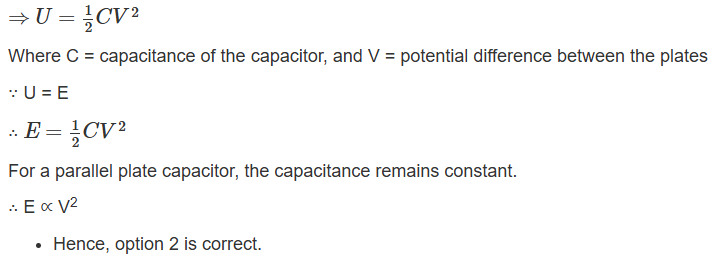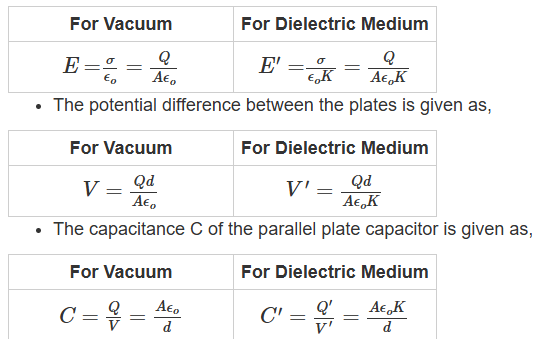CONCEPT:
Capacitor:
- The capacitor is a device in which electrical energy can be stored.
- In a capacitor two conducting plates are connected parallel to each other and carrying charges of equal magnitudes and opposite sign and separated by an insulating medium.
- The space between the two plates can either be a vacuum or an electric insulator such as glass, paper, air, or semi-conductor called a dielectric.
Parallel plate capacitor:
- A parallel plate capacitor consists of two large plane parallel conducting plates separated by a small distance.
- The space between the two plates can either be a vacuum or an electric insulator such as glass, paper, air, or semi-conductor called a dielectric.
The energy stored in the capacitor is given as,

Energy density:
- It is defined as the energy stored per unit volume of space between the plates.
- Energy density u between the plates is given as,

Where C = capacitance of the capacitor, Q = charge on the plates, V = potential difference between the plates, and E = electric field intensity between the plates
EXPLANATION:
Given U = E
We know that the energy stored in the capacitor is given as,

Additional Information
Parallel plate capacitor:
- A parallel plate capacitor consists of two large plane parallel conducting plates separated by a small distance.
- The space between the two plates can either be a vacuum or an electric insulator such as glass, paper, air, or semi-conductor called a dielectric.
- The electric field intensity at the outer region of the parallel plate capacitor is always zero whatever be the charge on the plate.
- The electric field intensity in the inner region between the plates of a parallel plate capacitor remains the same at every point.
- When the dielectric medium is filled in the space between the plates of the parallel plate capacitor, its capacitance increases.
- The electric field intensity in the inner region between the plates of a parallel plate capacitor is given as,

Where A = area of the plates, d = distance between the plates, Q = charge on the plates, σ = surface charge density, E = electric field between the plates, and K = dielectric constant


 Get latest Exam Updates
Get latest Exam Updates 
 ×
×
















